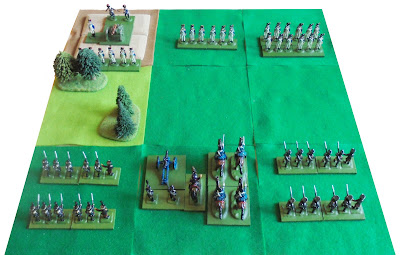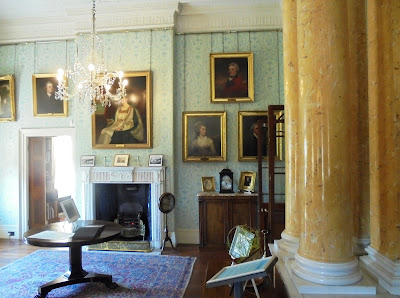Sue and I have been wanting to return to Tiverton for some time, and as the weather was good and I had no hospital appointments due for a week or so, we contacted the owners of Tiverton Castle to see if our preferred holiday let (Castle Lodge) was available. It was … and last Thursday we set off on the two-hundred-mile journey from Southeast London to the West Country.
Friday 12th August
We left home a few minutes after 11.00am, and twenty-five minutes later we had joined the M25 at the Dartford interchange. The traffic was heavy, and by the time we reached Junction 10, where the M25 and A3 intersect, the estimated journey time had risen from four to five hours and the satnav was advising us to turn off to avoid the traffic jam that was ahead of us.
We accepted the suggested route, which took us via Guildford, Aldershot, and Frimley, where we were able to join the M3. After a very brief stop at Fleet Services for a comfort break, we carried on down the M3 until the A303 branched off it just past Basingstoke. We then travelled along the so-called ‘Highway to the Sun’, taking diversions around well-known choke points like Stonehenge.
By 3.00pm we were in need of both a comfort break and lunch and chose to stop at Camel Hill Services between Amesbury and Ilchester, where we ate an excellent meal at the Mattia Diner.
We were finished and on our way by 3.45pm, and finally reached Tiverton Castle at 5,30pm after turning off the A303 near Ilminster and onto the A358 and then the M5. Our host was waiting to greet us with a cake, milk, fresh fruit, and tomatoes, all of which were much appreciated.
We had unloaded our car by just after 6pm, and once we had unpacked, Sur and I had a much-needed drink and spent the rest of the evening chilling out. thanks to our late lunch, neither of us felt very hungry we did not both to go out to eat, but stayed at home and had a snack that included some of the excellent tomatoes that we had been given
Saturday 13th August
After a much-needed night's sleep, Sue and I went for a walk into the centre of Tiverton. Our stroll took us through the Pannier Market and out into Fore Street, which is a pedestrianised area where many of the shops can be found. Having done some shopping, we walked down Gold Street to the statue of King Edward VII ('The Peacemaker' according to the inscription) and then back to Bampton Street, which took us back to the castle.
Sue and I had arranged to have lunch with our nephew, who is one of the duty managers of the Lord Poulett Arms in Hinton St George, in Somerset. The village is three miles from Crewkerne, and as the Lord Poulett Arms has a well-earned reputation for its food and drink, it made sense to meet there. The drive took us just under an hour, and after a brief tour of the establishment, we had a drink in the garden before eating in the restaurant. The food was excellent, and it was great to be able to have a long chat with our nephew.
We returned home by 5.00pm and spent the rest of the day trying to keep cool and watching The Hundred on TV.
(For the benefit of those of you who don't follow cricket, The Hundred is a competition between teams from around the UK where each side faces one hundred balls organised in twenty 5-ball sets. The rules are similar to other limited over formats of the game, but with a few specific rules of its own.)
Sunday 14th August
Sue and I are both members of the National Trust, and as we had seen signs to Killerton House on our drive to Hinton St George on the previous day, we decided to pay it a visit. It was already over 30°C when we arrived, and during out stay it got even hotter.
Until it was sold to the National Trust in 1944 by Sir Richard Thomas Dyke Acland, 15th Baronet (26th November 1906 to 24th November 1990), the house was the home of the Acland family of baronets (i.e., hereditary knights).
The entrance to the property is through the old stable block.
Besides the entrance, the old table block houses a shop, a second-hand bookshop, and one of the property's two cafés.
The approach to the main door into Killerton House.
The main door into Killerton House.
The view of part of the surrounding estate, as seen from the house's main entrance.
Whilst we were at Killerton, we visited all the rooms that were open of the ground floor, ...
... before making our way upstairs, ...
... where an exhibition that traced the development of sports and leisure wear was being staged.
One of the exhibits was a dolls house that had lights that could be turned on ...
... and turned off.
After paying a visit to the house's laundry (the backstairs areas of these large houses is always very interesting!), ...
... we had a drink in the café that forms part of the house's ground floor. This proved to be a good idea, as we both got very hot on the walk back to the stable block, which houses the shop and another café.
Sue and I then decided to go to Exmouth in the hope of being able to find somewhere to park and get lunch ... but the town and beach were more crowded than we had even seen before, and after a fruitless search for somewhere to park, we drove back to Tiverton.
We returned to Exmouth later that day, by which time many people had returned home from the beach.
We were able to find a parking space near to the Marina, and it was only a short walk from there to the Rockfish Restaurant, where we were able to eat some fresh-caught fish accompanied by chunky chips, mushy peas, and home-made tartare sauce.
The sun was setting by the time we had finished eating, ...
... and it was dark by the time we retuned to Tiverton. We spent the rest of the evening resting and watching more cricket on TV and were asleep well before midnight.
Monday 15th August
The weather began to change overnight. The heat of the previous day did not dissipate, and the humidity began to rise, and when this was coupled with a total lack of even a breeze, the air in Castle Lodge was stifling. We managed to get some sleep, but it was very fitful until the rain finally began to fall as did the air temperature.
After a late breakfast, Sue and I paid a visit to shop at Heathcoat Fabrics, the local fabric manufacturer. Sue was able to buy enough material for three skirts and a jacket at prices that were well below what she would have had to have paid in London. We then returned home for a drink before getting ready from a visit from some long-term friends of ours who moved to Somerset just before COVID struck. We had seen them a couple of time since, and on this occasion, they came to visit us for a full-blown afternoon tea.
Our friends had just arrived when the skies began to darken and for the first time in weeks it began to rain ... torrentially! This lasted for over two hours and ended just in time for our friends to leave to return home before a thunderstorm arrived over Tiverton. This lasted for quite some time, and it was still raining when we went to bed.
Tuesday 16th August
We awoke just after 7.00am and were ready to return home at 9.30am. We handed back the keys to Caste Lodge to our host, and after stopping off at the local branch of Morrison's for breakfast, we left Tiverton at 10.30am.
Our route took us back to the M5, then onto the A358 at Taunton. We joined the A303 near Ilminster and travelled along it until it merged with the M3, and thence as fat at the junction with the M25. We then drove around the motorway in an anticlockwise direction until we reached junction with the A2. We turned off the motorway there, and less then thirty minutes later we were home and unloading our car.
Our journey home had taken us just four and a half hours ... which, in spite of the bad weather we had to drive through on our way back, was two hours less than our journey to Tiverton.





































































































